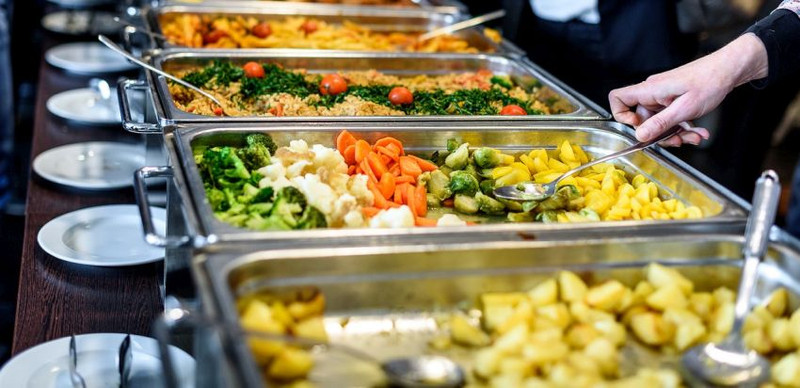The more we know about how our bodies really work, the more amazing these wondrous human mechanisms make themselves out to be. Take digestion, for instance. There's more to it than sticking food in our mouths, chewing it and then letting it fuel our bodies before what's left over departs our bodies as waste. Consumed food needs to be broken down beyond what we can manage to do with our teeth, and much of that work is done by enzymes. It seems there is almost a different type of digestive enzyme for every type of food – enzymes are matched to particular foods, and all we have to do is let those enzymes go to work. Enzymes, which are special proteins (per bbc.co.ok), are very specific. As enzymestuff.com puts it, each enzyme has a particular job it does, and it does only that job. . . . Enzymes must have the right shape and chemistry to function. All this makes enzymes central to our digestion, with our digestive system breaking down the nutrients contained in the food we eat, converting them into small molecules that your cells, tissues, and organs use as fuel and for hundreds of metabolic functions. Once we break down consumed food by chewing it – the idea is to chew slowly and completely to make the pieces small – specialized enzymes (manufactured in different areas of the digestive tract) finalize the process. It's almost like they have been coded by computer programmers – programmed to seek out and process certain foods. Amazing, isn't it?
Types of Enzymes
It can get a bit yucky when explaining the inner workings of how our digestive system works, so cover your eyes if you must for the rest of this paragraph. Enzymes known as protease enzymes break down proteins (ordinarily those found in meats, nuts, eggs, and cheese) into amino acids. OK, now here comes the part that might make you grimace – when proteins are digested in the stomach, they are helped in that process by stomach acid, which is actually hydrochloric acid. As icky as it might sound, it also serves to kill potentially-harmful micro-organisms that could be in the digested food. Food digestion does take a while, hidden from view, lasting for hours, with occasional rumbles, growls, and gurgles emanating from inside our digestive tracts reminding us that the machinery is hard at work. Following, per healthyeating.sfgate.com, is a brief account for each of several of the more prominent types of enzymes that help the process along:- Amylase. This digestive enzyme works on starch that is contained in the starch in food, breaking it down into smaller carbohydrate molecules. This enzyme is manufactured in two places – inside our mouths courtesy of salivary glands that produce salivary amylase that that breaks down starch while we chew our food and transforms it into a smaller carb known as maltose that is accompanied by a slightly sweet taste. The other type of amylase – pancreatic – is made by cells in the pancreas and is involved in the digestion of carbs and in the production of glucose transported by blood throughout the body.
- Protease. This is a general term for an enzyme that breaks down protein into amino acids, a protein's building blocks. The three main types of proteases are pepsin, trypsin, and chymotrypsin. Pepsin is produced when its predecessor, pepsinogen, hits our stomach acid. Trypsin and chymotrypsin, on the other hand, are produced by the pancreas, which are released into the small intestine. They help finish the digestion of protein, in the process making simple amino acids absorbed into circulation.
- Lipase. This is an enzyme, also produced in large part by the pancreas, that targets dietary fats, breaking them down into fatty acids and glycerol (small, energy-dense molecules utilized by all our cells). These fatty acids and glycerol are transported to all areas of our bodies by our blood as well as by our lymph nodes.
- Other enzymes. There are many other types of enzymes such as those manufactured by cells lining our intestines, to include maltase, lactase, and sucrase, with each one able to convert a specific type of sugar into glucose. Then there are the enzymes renin and gelatinase, secreted by special cells in the stomach, with renin targeting milk proteins and gelatinase going after gelatin and collagen.

